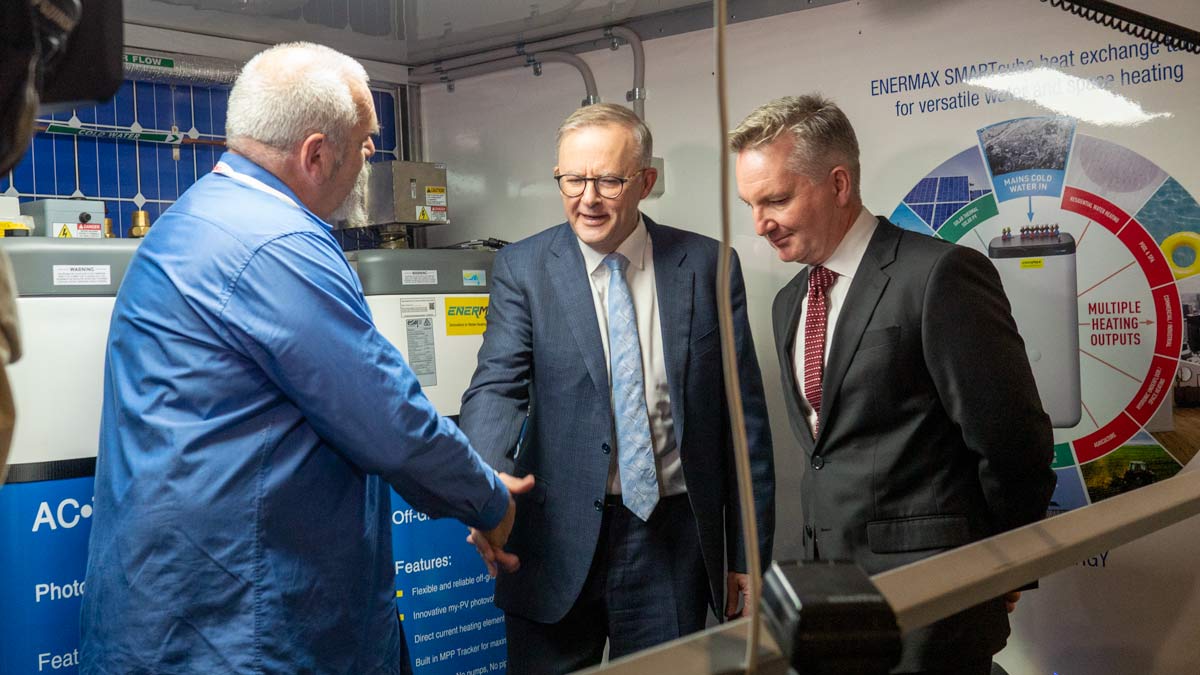Australia is well-positioned to be a world leader on climate change.
Our geographic position, our wealth of natural resources and our strengths in advanced manufacturing, technology and trade give us a unique perspective that should influence global thinking on climate.
Our own vulnerability – and that of our Pacific neighbours – to worsening seasonal impacts from storms, floods and bushfires demands that we do.
That’s why it makes sense for us to co-host the United Nations climate change conference in 2026. While winning the bid for COP31 won’t be easy, it will revive our global reputation and show the world we can be climate leaders.
We have a great chance to be the winning host and Switzerland has pulled out after considering their own bid saying ‘Australia has advance candidacy’ and it also has ‘co-operation with Pacific Island states so hard hit by climate change’.
But Australia is lagging – both at a policy level and in the business community – compared to our global peers on climate. Two-third of Australian corporates admit they have low confidence in achieving their sustainability ambitions.
As our planet keeps warming, ambition won’t be enough. To be taken seriously on climate, governments and businesses must close the ‘execution gap’.
On the policy side, that means revisiting our reliance on carbon offsets and instead directing more funding into climate related technologies and investments. Fundamentally, we need a plan to phase out coal, curb fossil fuel exports and invest in new technologies.
At the same time, we need to build a sovereign manufacturing capability rather than exporting the raw materials.
The course the government chooses will have direct implications for corporate Australia, who themselves are lagging on both ambition and execution while they wait to see where the wind blows.
Corporate Australia’s execution gap
According to the Investor Group on Climate Change, only 30 per cent of ASX200 companies follow international guidelines for making climate-related financial disclosures. Further, just 17 per cent (69 companies) have approved or committed to science-based targets – a far lower share than in Japan, France, Germany or the G20 countries overall.
It seems baffling for companies to wait for the international scrutiny of global compliance standards and mandatory reporting requirements before they take the public’s pulse on progress against their own sustainability targets.
The stakes are high: failure to execute once climate policy is regulated will lead to accusations of greenwashing, and potentially a loss of share value and inability to access capital. Just ask Volkswagen shareholders following the 2014 diesel emissions scandal, or anyone invested in the fashion industry.
Perhaps more important, capital markets will simply become inaccessible to companies that can’t demonstrate progress against their commitments.
The UN-convened Net-Zero Banking Alliance represents the 40 per cent of global banking assets committed to aligning their lending and investment portfolios with net-zero emissions by 2050, with intermediate targets for 2030 or earlier. Failure to meet these targets will directly influence the availability and cost of finance for Australian corporates.
The irony is that companies that fail to act now risk finding themselves unable to opt out of mandatory reporting, but are too far behind with their transformation to easily opt in.
Conversely, however, we know bold climate leadership can also deliver significant premiums. There is plenty of evidence to show that companies with the highest ESG ratings outperform lower-rated firms.
According to Kearney research, we also know that customers are also willing to pay a premium of up to 70 per cent for products with ESG leadership attributes.
While global energy and economic headwinds have the potential to undermine progress on ESG targets, policymakers and businesses need to remain steadfast in their commitment to the long haul, and to the attendant public benefits and competitive advantages this will bring in future.
Australia is the eighth highest emitter per capita and the first highest emitter per capita for coal fired electricity. Our national target of 43 per cent emissions reduction from 2005 levels by 2030 is a significant improvement from the previous 28 per cent target and is now enshrined in legislation. But it will take a 57 per cent reduction to reflect Australia’s fair share of global emissions and meet our net zero target for 2050.
ESG transformation is a journey, but it is also a race. Leading companies realise there is no alternative given current market and environment uncertainities.
If we are going to be serious about co-hosting a UN climate conference in only four years, we need to be serious about leading from the front.
Let’s think of COP 31 like Australia’s next 2000 Olympics moment where we can showcase Australia as a strong, independent country only this time as world leader on climate change.
Kate Hart leads Kearney’s strategic operations and ESG practices in Australia and New Zealand.










